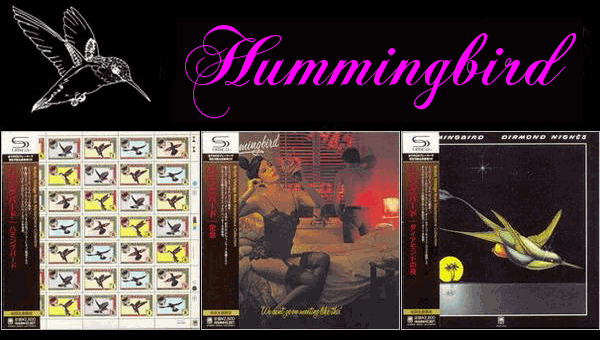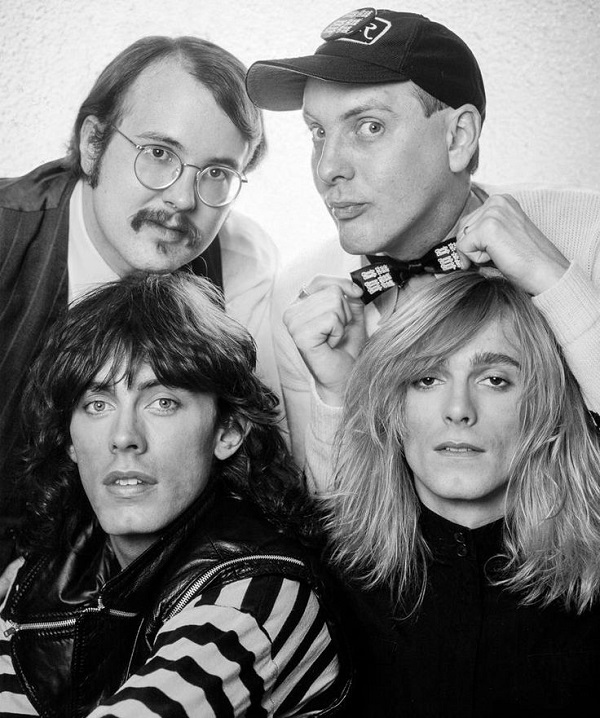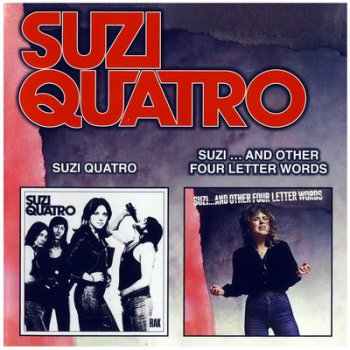PAUL MAURIAT «Discography» (26 × CD • Nippon Phonogram Co.Ltd. • 1970-1998)
Performer: PAUL MAURIAT / ボール・モーリア Album / collection: «Discography / ディスコグラフィー» Label: (c)(p) 1970-1998 Philips ⁄ Nippon Phonogram Co.Ltd. Source: Rip by KoGGaN™ scans by inet… Official DR value: •12•11•11•12•12•11•12•10•12•18•18•13•14• •12•11•12•12•11•14•12•15•12•11/11/11/11•13•11•11•11•11•11•12• Catalog (Barcode): much… Genre / Style: Pop, Easy Listening, Classical, Soundtrack, Stage " alt="">

PAUL MAURIAT «Discography» (26 × CD • Nippon Phonogram Co.Ltd. • 1970-1998)
Performer: PAUL MAURIAT / ボール・モーリア Album / collection: «Discography / ディスコグラフィー» Label: (c)(p) 1970-1998 Philips ⁄ Nippon Phonogram Co.Ltd. Source: Rip by KoGGaN™ scans by inet… Official DR value: •12•11•11•12•12•11•12•10•12•18•18•13•14• •12•11•12•12•11•14•12•15•12•11/11/11/11•13•11•11•11•11•11•12• Catalog (Barcode): much… Genre / Style: Pop, Easy Listening, Classical, Soundtrack, Stage " alt="">
08 10, 2025
Hummingbird: 3 Albums Mini LP SHM-CD - Universal Music Japan 2010
Lossless Galaxy Release Hummingbird: 3 Albums Mini LP SHM-CD Universal Music Japan 2010 Performer: Hummingbird Albums: -------------- ☆☆☆☆☆☆☆☆☆☆☆ -------------- 1975 Hummingbird A"> 1976 We Can't Go On Meeting Like This A"> 1977 Diamond Nights A"> Каждый CD можно скачать отдельно Each CD can be downloaded separately • • • • • • • • • • • • • • • • • • • • • • • • • • • • • • • • Upload: xFile.cloud (5% восстановление) cdjapan.co.jp Cardboard sleeve (mini LP) reissue

Hummingbird: 3 Albums Mini LP SHM-CD - Universal Music Japan 2010
Lossless Galaxy Release Hummingbird: 3 Albums Mini LP SHM-CD Universal Music Japan 2010 Performer: Hummingbird Albums: -------------- ☆☆☆☆☆☆☆☆☆☆☆ -------------- 1975 Hummingbird A"> 1976 We Can't Go On Meeting Like This A"> 1977 Diamond Nights A"> Каждый CD можно скачать отдельно Each CD can be downloaded separately • • • • • • • • • • • • • • • • • • • • • • • • • • • • • • • • Upload: xFile.cloud (5% восстановление) cdjapan.co.jp Cardboard sleeve (mini LP) reissue
08 10, 2025
Cheap Trick - The Studio Album Collection «Exclusive for Lossless-Galaxy» (Hi-Res) 1977-1990
Исполнитель: Cheap Trick Альбом: The Studio Album Collection «Exclusive for Lossless-Galaxy» (Hi-Res) Жанр: Rock, Hard Rock, Power Pop, Pop Rock Год: 1977-1990 Страна: USA (Rockford, Illinois) Лейбл: Epic, Legacy Формат: FLAC (tracks) Official DR value: DR12,13,13,12,12,11,10,10,11,10,11,13,13 Разрядность: 24bit / 44.1kHz Stereo, 24bit / 96kHz Stereo, 24bit / 192kHz Stereo Размер: 9,11 GB Инфо: wiki Залито на: XFile (3% восстановление)

Cheap Trick - The Studio Album Collection «Exclusive for Lossless-Galaxy» (Hi-Res) 1977-1990
Исполнитель: Cheap Trick Альбом: The Studio Album Collection «Exclusive for Lossless-Galaxy» (Hi-Res) Жанр: Rock, Hard Rock, Power Pop, Pop Rock Год: 1977-1990 Страна: USA (Rockford, Illinois) Лейбл: Epic, Legacy Формат: FLAC (tracks) Official DR value: DR12,13,13,12,12,11,10,10,11,10,11,13,13 Разрядность: 24bit / 44.1kHz Stereo, 24bit / 96kHz Stereo, 24bit / 192kHz Stereo Размер: 9,11 GB Инфо: wiki Залито на: XFile (3% восстановление)
08 10, 2025
Жанры
Lossless Galaxy Release
Русская музыка
--Поп
--Рок
--Панк
--Альтернатива
--Металл
--Рэп, Хип-Хоп, R'n'B
--Джаз и Блюз
--Фолк
--Шансон, Авторская песня
--СССР
Зарубежная музыка
--Pop
--Rock
--Hard Rock
--Progressive & Art-Rock
--Pop-Rock & Soft Rock
--Instrumental Rock
--Heavy, Traditional, Industrial Metal
--Power, Gothic, Sympho Metal
--Thrash, Speed, Groove, Modern Metal
--Death, Melodic Death, Doom, Dark Metal
--Black, Pagan, Folk, Viking Metal
--Alternative
--Punk
--Disco, Eurodance
--Rap, Hip Hop, R'n'B
--Reggae, Ska, Dub
--Jazz, Blues, Soul
--Folk, Country, Ethnic
--Electronic, Ambient, New Wave
--House, Techno, Trance
Другие жанры
--New Age, Relax, Meditative & Flamenco
--Chillout, Lounge, Downtempo, Trip-Hop
--Drum & Bass, Jungle, Breakbeat, IDM
--Classical / Классическая музыка
--Soundtrack
--Музыкальные сказки
Vinyl Rip
HI-Res / DVD-Audio / DTS
--SACD
--DSD
--DVD-Audio
Сборники Lossless-Galaxy
Альбомы 2022
Альбомы 2023
Альбомы 2024
Теги
1st Press 2022 2023 2024 2025 70... AOR Black Metal Blues Blues Rock Bootleg Series Classic Rock Death Metal Discography Exclusive for Lossless-Galaxy Folk Rock Fusion Hard Rock Heavy Metal Hi-Res Japanese Edition Jazz Jazz Rock lossless Melodic Death Metal Melodic Rock Modern Electric Blues Pop Pop Rock Power Metal Prog Rock Progressive Metal Progressive Rock Psych Rock Psychedelic Rock Rock SACD Symphonic Metal Thrash Metal Дискографии от KoGGaN
Архивы
Опрос
В каком формате хотели бы видеть релизы на сайте ?
 Автор: LeddZepp, 13 декабря 2020, Комментариев: 0, Просмотров: 1 423
Автор: LeddZepp, 13 декабря 2020, Комментариев: 0, Просмотров: 1 423Blondie - Eat to the Beat (1979) [Vinyl Rip]
![Blondie - Eat to the Beat (1979) [Vinyl Rip] Blondie - Eat to the Beat (1979) [Vinyl Rip]](/uploads/posts/2020-12/1607858841_blondie79eattothebeat_500_lp.jpg)
Year: 1979 (LP 1979)
Label: Chrysalis Records (UK), CDL 1225E
Style: Pop, New Wave
Country: New York City, U.S.
Time: 42:32
Format: Flac Tracks 16/44,1 kHz
Size: 295 Mb
Продюссировал группу Mike Chapman, знакомый нам по совместной работе с Nicky Chinn. Дуэт продюсеров сотрудничал с такими исполнителями как - The Sweet, Suzi Quatro, Smokie, Mud.
Лицом группы является певица Deborah Harry (born July 1, 1945). Думается не из-за выдающихся вокальных данных, а за счёт своей внешности. Но надо отдать ей должное - она и гитарист Chris Stein (born January 5, 1950) являются не только основателями группы, но и авторами почти всего материала, записанного на альбоме "Eat to the Beat".
Альбом стал Платиновым в Америке и Британии. В течении года оставался в Billboard album chart. В США добрался до 17 места, а в Англии до первого. Ко всему этому в Америке внесён в TOP 10 альбомов 80-х годов.
Matrix side A: CDL1225 A//5E420, side B: JARC CDL1225 B//4E420
01. A1 Dreaming (03:04)
02. A2 The Hardest Part (03:39)
03. A3 Union City Blue (03:19)
04. A4 Shayla (03:53)
05. A5 Eat To The Beat (02:39)
06. A6 Accidents Never Happen (04:10)
07. B1 Die Young Stay Pretty (03:31)
08. B2 Slow Motion (03:26)
09. B3 Atomic (04:37)
10. B4 Sound-A-Sleep (04:14)
11. B5 Victor (03:16)
12. B6 Living In The Real World (02:40)
![Blondie - Eat to the Beat (1979) [Vinyl Rip] Blondie - Eat to the Beat (1979) [Vinyl Rip]](https://thumbs2.imagebam.com/e1/4e/ae/3503611362781503.jpg)
![Blondie - Eat to the Beat (1979) [Vinyl Rip] Blondie - Eat to the Beat (1979) [Vinyl Rip]](https://thumbs2.imagebam.com/74/7a/3e/35c1cc1362781509.jpg)
![Blondie - Eat to the Beat (1979) [Vinyl Rip] Blondie - Eat to the Beat (1979) [Vinyl Rip]](https://thumbs2.imagebam.com/44/7a/10/66bdb91362781512.jpg)
![Blondie - Eat to the Beat (1979) [Vinyl Rip] Blondie - Eat to the Beat (1979) [Vinyl Rip]](https://thumbs2.imagebam.com/83/6e/d5/7723281362781515.jpg)
![Blondie - Eat to the Beat (1979) [Vinyl Rip] Blondie - Eat to the Beat (1979) [Vinyl Rip]](https://thumbs2.imagebam.com/6a/d1/c1/fcc37e1362781517.jpg)
![Blondie - Eat to the Beat (1979) [Vinyl Rip] Blondie - Eat to the Beat (1979) [Vinyl Rip]](https://thumbs2.imagebam.com/dd/f6/b1/b9e2ea1362781520.jpg)
При желании можно посмотреть все мои публикации на сайте. Приятного прослушивания. Жмём и смотрим (Click to see all of my posts)!
Внимание! У Вас нет прав для просмотра скрытого текста.
Изменил: LeddZepp по причине: Обновил ссылки и описание.
Похожие новости:
Комментарии отсутствуют
Добавить комментарий!
Информация
Посетители, находящиеся в группе Гости, не могут оставлять комментарии к данной публикации.

![Mud – Mud Rock [Vinyl Rip] (1974)](/uploads/posts/2023-02/mud74mudrock_500_lp.jpg)

![Suzi Quatro - If You Knew Suzi [Vinyl Rip] (1978)](/uploads/posts/2022-07/suziquatro78ifyouknew_500_lp.jpg)

